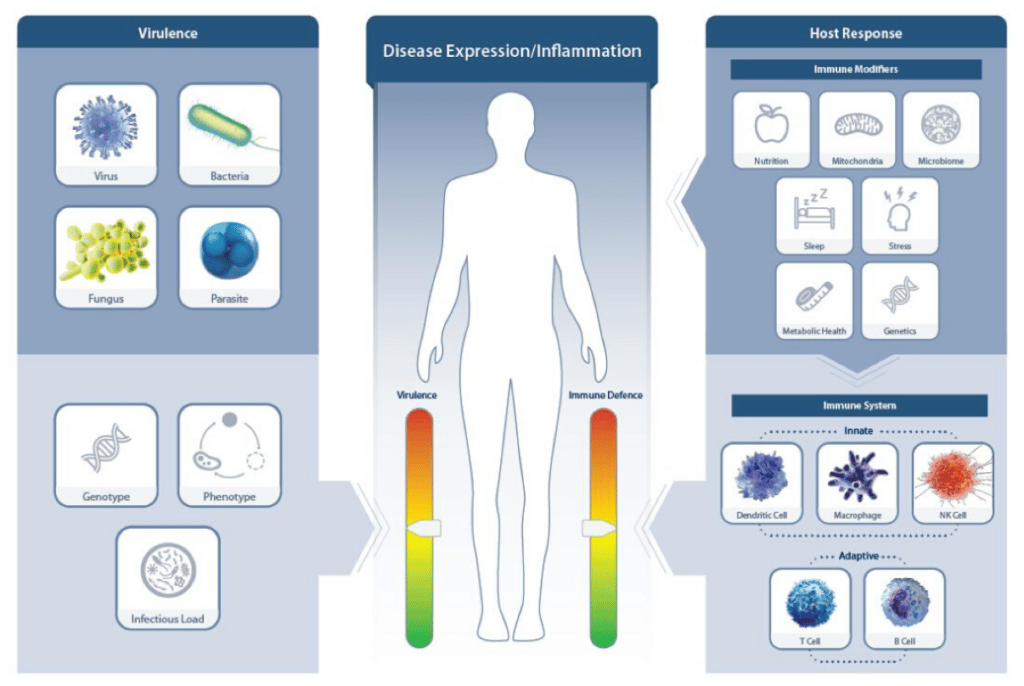
COVID-19 – Information
- Look after one another
- Stay calm and carry on
- Focus on community care
With growing concerns surrounding COVID-19, it is important to remain informed of the facts and choose what you focus on. Let’s take a deeper look at the coronavirus and exactly how you can protect yourself and your loved ones.
What is coronavirus?
Coronaviruses are a large family of viruses, seven of which are currently known to infect humans. Four of these strains cause minor symptoms similar to the common cold and two are more severe diseases including Severe Acute Respiratory Syndrome (SARS) and Middle East Respiratory Syndrome (MERS). COVID-19 is the latest strain to have been identified within this family of viruses.
What is novel coronavirus (COVID-19)?
At first, COVID-19 was known as ‘novel coronavirus’, which means a new strain of coronavirus. Once scientists discovered what this strain of coronavirus was and how to identify it in tests, they gave it the name: SARS-CoV-2.3 When someone gets sick with this virus the illness is called COVID-19. For simplicity, the virus and the disease are being referred to by the same name, COVID-19.4
Novel coronavirus (COVID-19) was discovered in 2019 when an unusually high number of people in Wuhan, China, became ill with pneumonia after having an illness similar to the flu. When doctors tested them, they found these people had a type of coronavirus they hadn’t seen before.
Why is it spreading so quickly?
The reason COVID-19 is spreading so quickly is simply that it is a new virus the body does not recognise, and as such has little defence against. To explain this further, viruses are proposed to evolve via two mechanisms:
- Antigenic drift: Occurs when small changes (or mutations) in viral genes lead to changes in the surface proteins of the virus, known as hemagglutinin (HA) and neuraminidase (NA).
- Antigenic shift: Occurs when a major change in viral genes creates new HA and/or new NA proteins, resulting in a new virus subtype. Antigenic shift is theorised to occur when a virus from an animal population gains the ability to infect humans — a proposed mechanism behind the origin of COVID-19, which has been linked to a live animal market.6
As a result of this antigenic shift, the body’s immune system may not recognise the surface proteins of the evolved virus, resulting in increased susceptibility to infection. This viral evolution may account for COVID-19’s increased virulence, as this novel virus represents a newly identified pathogen with no known pre-existing immunity in humans.
How is it spreading?
Transmission of COVID-19 occurs when infected droplets are distributed via human-to-human contact, usually when a sick person coughs or sneezes. It may also be spread via contact with contaminated objects as human coronaviruses can remain infectious on inanimate surfaces for up to 9 days.7 Airborne spread has not been reported for COVID-19 and it is not believed to be a major driver of transmission.8
What are the symptoms of coronavirus?
Symptom severity of COVID-19 varies, with mixed reports of severe flu-like symptoms in addition to milder presentations. Primary symptoms to be aware of include:
- Fever, cough and shortness of breath/breathing difficulties.
Affected individuals may also experience additional flu-like symptoms including:
- Headache, muscular stiffness and pain, loss of appetite, malaise/extreme generalised fatigue, chills, confusion, dizziness, rash, night sweats, and gastrointestinal upset.
Who is most at risk?
Individuals at highest risk for severe disease include people aged over 60 years and those with underlying medical conditions. Susceptible individuals include:
- The elderly
- Immunocompromised individuals
- People with serious or chronic medical conditions including heart disease, diabetes and lung disease
- People who have recently travelled to mainland China, South Korea, Iran and Italy
- Individuals in close contact with a confirmed case of coronavirus, particularly during the infectious period
How you can protect yourself from coronavirus
As COVID-19 is a novel virus, there is no vaccine currently available. However, practising good hand and sneeze/cough hygiene provides the best defence against viral infections. These include:
- Washing your hands frequently with soap and water, before and after eating, and after going to the toilet.
- Covering your mouth and nose when coughing and sneezing, immediately disposing of tissues and using alcohol-based hand sanitiser.
- If unwell, seek immediate guidance from a medical professional. You may be advised to isolate yourself from the general population for up to 14 days to stop viral spread.
The onset and severity of infection in response to viral pathogens is greatly influenced by the virulence of the pathogen and the host’s immune defences (Figure 1). While little can be done regarding the virulence of COVID-19, improving an individual’s immune response is the most effective strategy to protect against any pathogen.

Figure 1: Factors that influence virulence of pathogens (left) offset by physiological and lifestyle components that support immune defences, dictating the body’s response to infection.
What to do if you develop symptoms
Currently, there is a shortage of chemicals to test for COVID-19. YOU MUST NOT ATTEND AT YOUR LOCAL GENERAL PRACTICE OR PATHOLOGY CENTRE FOR TESTING. If you have a fever over or equal to 37.5 degrees plus respiratory symptoms you should attend a major hospital for testing (FSH, SCGH, PCH, RPH). These are the only centres with the assay for testing. If you are not sure then the safe approach is to self- isolate and call the hot line: 1800 675 398
If you are concerned please call the Coronavirus Hotline on 1800 675 398.
Yours In Good Health
Deborah Taylor
NatMed Clinic Director
